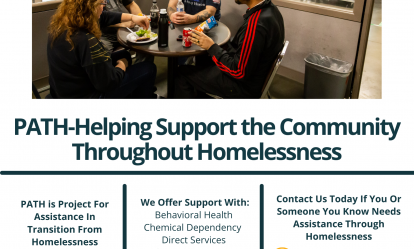by:

_
_
_
_
- Nonprofit Doesn’t Mean The Employees Don’t Get Paid:
It’s a surprisingly common misconception that people outside of the nonprofit world think. There is an assumption that when working for a not-for-profit organization that the employees are either there on a volunteer basis or some-kind of hybrid volunteer/paid employment structure. Although we’re a firm believer that those doing nonprofit work could be paid more, especially the fantastic employees here at Bridgeways, people working in for a nonprofit do get paid and get paid at a competitive market rate for similar work.
- People Working At A Nonprofit Work For More Than Money, They Work For Mission:
Although employees get paid at a nonprofit, they are often doing this work for reasons in addition to money. Many employees working for nonprofits are motivated and inspired to do the work because there is a greater purpose and mission they are serving. It is important however, that the nonprofit organization does not take advantage of that and create unhealthy workplace habits like working off the clock. We believe at Bridgeways that nonprofit work usually attracts a special kind of employee and we strive to make sure, that the thing that makes them special is rewarded and never abused.
- Nonprofits Don’t All Look The Same:
Nonprofits can vary in size, structure and scope. This means that not all nonprofits are the same. For example, the Red Cross and Habitat for Humanity are nonprofits and pretty well-known ones at that, but so are the NRA, the NFL and even the Green Bay Packers! At Bridgeways we are a nonprofit social enterprise where we strive to fulfill our mission to provide a better quality of life for those living with a mental health concern through employment in our contract manufacturing and through our clinical services that tackle housing, employment and jail diversion. Our organization looks in many ways like a for profit business while other parts reflect that nonprofit structure.
- Nonprofits Can Serve Different Interests:
As we alluded to in number 3, there are a multitude of different kinds of nonprofits. The most common nonprofit is a 501(c)(3), these are, “corporations, funds or foundations that operate for religious, charitable, scientific, literary or educational purposes.” This would include organizations like: The Salvation Army, American Red Cross and Goodwill. But there are other kinds of nonprofits that you may not know about. These include:
- Section 501(c)(4): civic leagues and social welfare organizations, homeowners associations, and volunteer fire companies.
- Section 501(c)(5): labor unions, etc.
- Section 501(c)(6): chambers of commerce.
- Section 501(c)(7): Social and Recreational Clubs
- Section 501(k): childcare-related organizations.
- There are many others. The U.S. Internal Revenue Code contains several different classifications of tax-exempt groups.
- Nonprofits Can Have Multiple Core Functions:
What this means is that a nonprofit can do several different things that may not always appear to work together, but when framed in the context of a mission can work for that mission. When you think of brands like Nike, Coca Cola or Tesla, you usually think about the one thing that those companies do. Nike does athletic clothing, Coca Cola does beverages, Tesla does cars. Nonprofits can feel like they are more complex than that. At Bridgeways we have a contract manufacturing side and a clinical services side. One works with for profit businesses to fulfill their manufacturing needs while our clinical works to fulfill the needs of those looking for housing, employment and alternatives to jail time. But under the mission of promoting a quality of life with those living with a mental health concern, we see that our clinical programs work with those living with a mental health concern get housing, employment and find alternatives to jail and our contract manufacturing works to employ some of those with a mental health concern to promote a better quality of life.
Check out our existing programs here!






